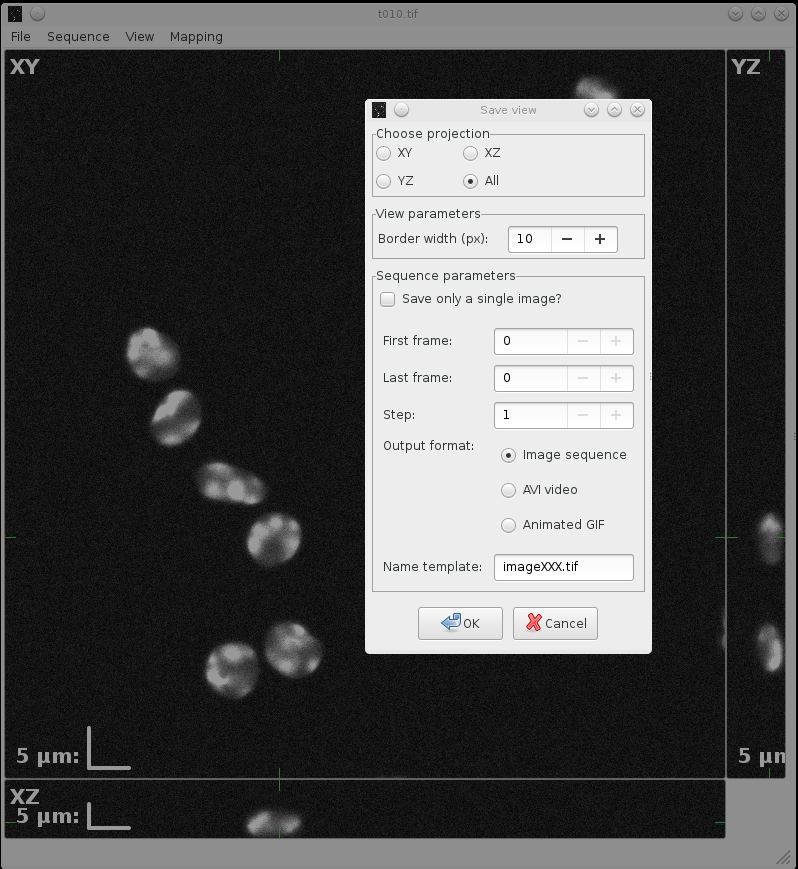Viewer4d - Exporting views
There are three export options implemented in the program to facilitate sharing results of the inspection of the data, by means of another images... :-)
The View->Save 3D data is basically a tool to convert the viewed image into another image format. In particular, the current mapping mode as well as currently displayed annotations are not affecting the output image. The image data is saved as is, only in (possibly) different image format.

Figure: Example of annotated image and the save view dialog.
The View->Save view is the main exporting feature of the viewer4d. It indeed exports the current inspection set up, including the currently used mapping mode, cut pointers, displayed annotations, position in the image, and the orthogonal projection windows.
In this option, one may choose what single projection window to be in the output image, or whether all of the available projection windows should be included. In the latter case, there is an artificial border drawn between the windows.
While the previous exporting option is saving the orthogonal views of a displayed 3D image, the View->Save gallery exporting option saves a gallery of z-slices to, basically, sample the original 3D image. The current displaying setup is honoured just like in the previous case.
Exporting a sequence
Obviously, when there is a sequence of images loaded in the program, users are allowed to choose whether to export their image data on the currently inspected image or on a given (sub)sequence. This is a common part of the three exporting dialogs. In the case of exporting sequence, user is allowed to choose subinterval of the loaded sequence, over how many frames to step over and the output format. Currently, only a sequence of images is implemented. Note again that in this case, the template name has to include substring of several consecutive 'X' characters; these will be replaced with appropriate index of the output image.